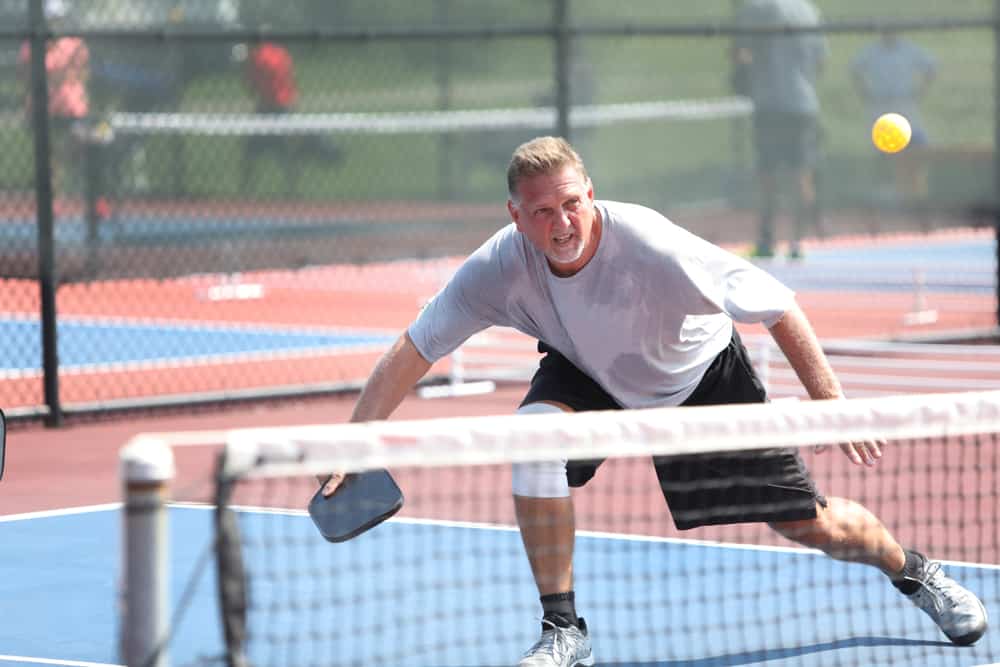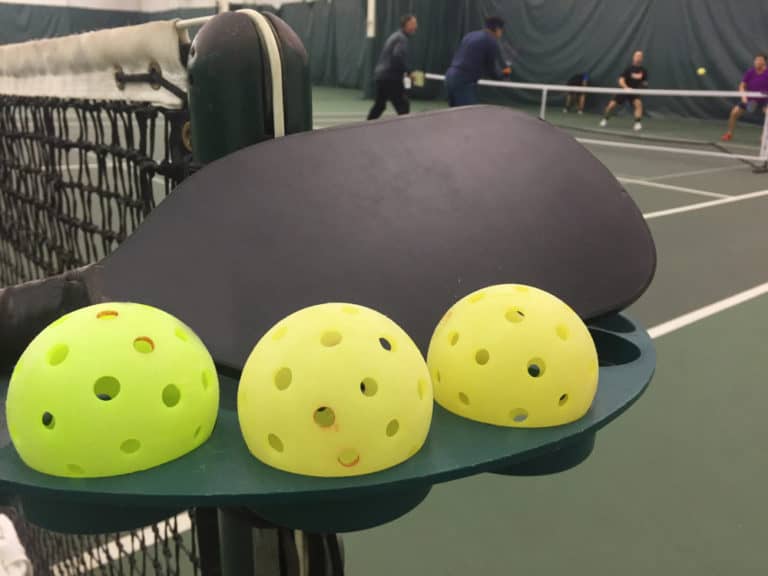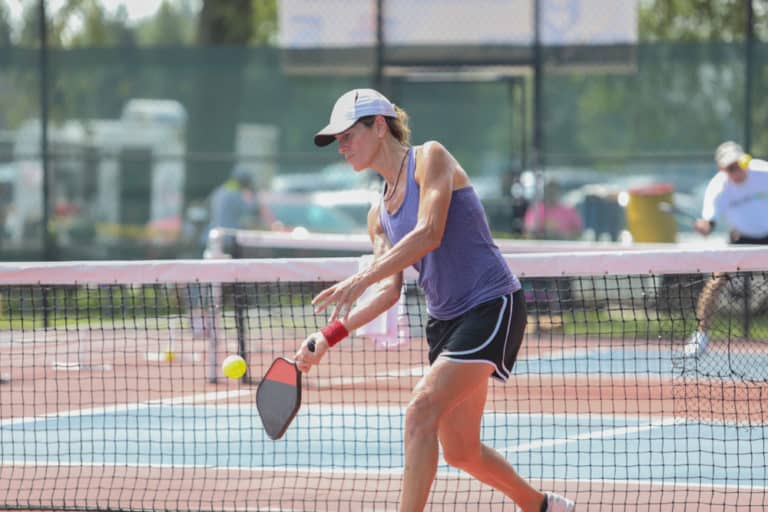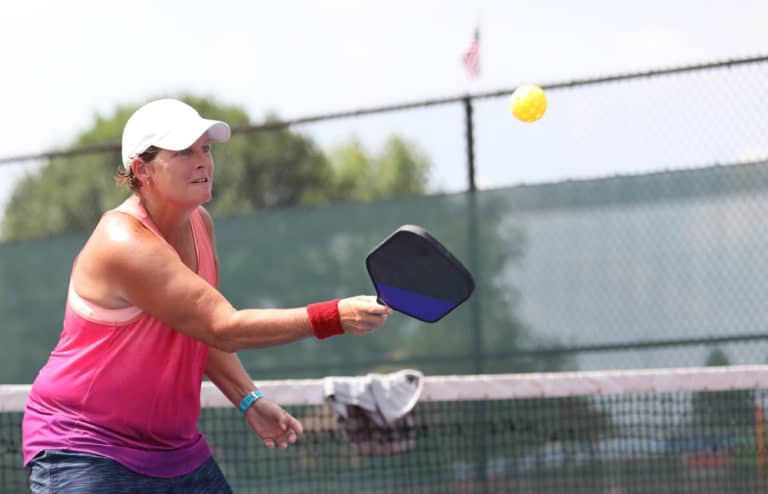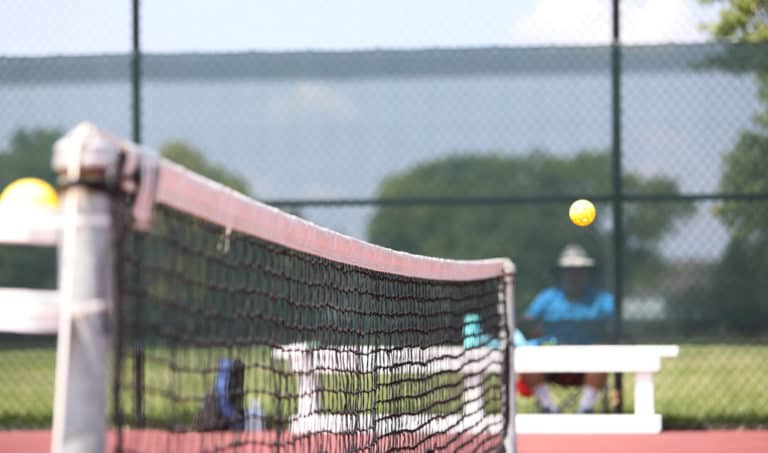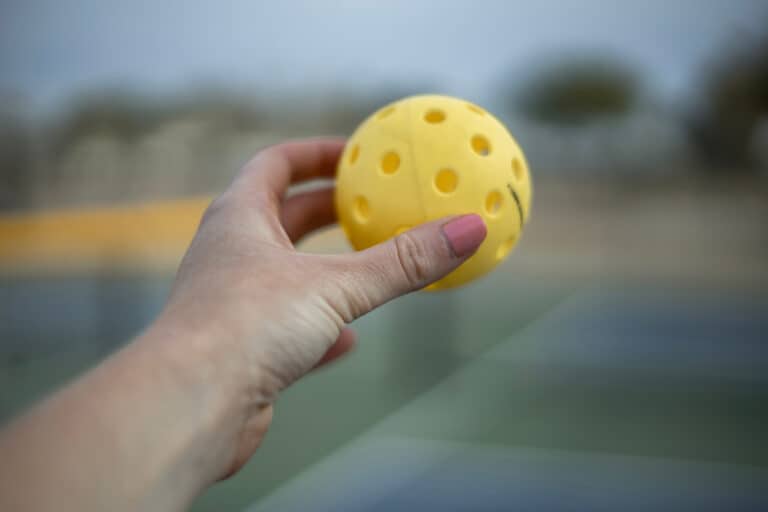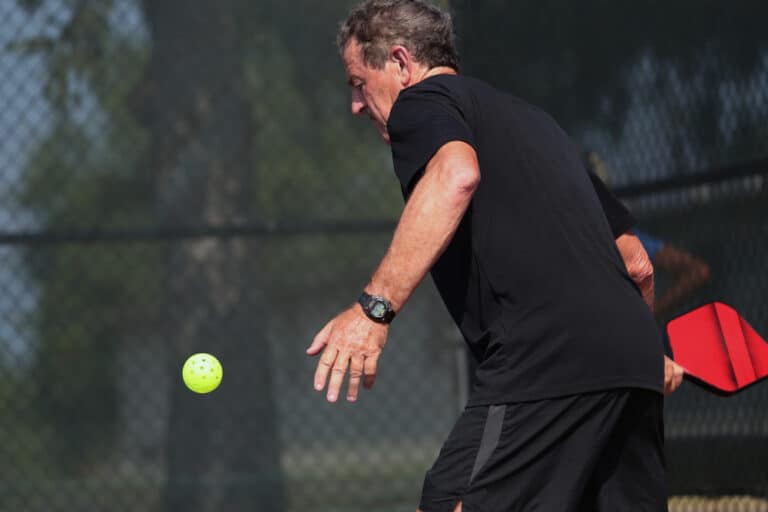How Do You Stop Pickleball Noise? (10 Ways Explained)
POP…POP…pop-pop…POP – The familiar sound of a pickleball game in full swing is fun and festive for the players, but it can be downright annoying for nearby homeowners. Since pickleball is growing rapidly, finding ways to reduce noise is essential so that more courts can be built in residential areas. While there is no way of soundproofing pickleball entirely, some methods will help reduce the noise.
Ten ways to stop pickleball noise:
- Use foam balls
- Use quieter paddles
- Install Acoustifence soundproofing
- Plan new courts mindfully
- Regulate hours of play
- Add a natural tree barrier
- Build a wall
- Court orientation counts
- Install baffles
- Get local residents playing
While pickleball will never be as quiet as chess, there are some ways to make the game less noisy without reducing any of the fun of the game. Let’s find out how you can continue to enjoy the sport of pickleball enthusiastically without driving the neighbors crazy.
Do We Need To Stop Pickleball Noise?
Since four pickleball courts can fit onto the space of one tennis court, there could be 16 people playing at any time. That’s a lot of hard paddles hitting plastic balls, and it is little wonder that residents in some communities have been less than enthusiastic about the noise.
The distinctive loud pickleball sound has become such an issue that lawsuits have been filed in some places. In Ridgewood, NJ, complaints from residents became so excessive that the mayor resorted to padlocking the local pickleball courts to stop the noise.
The game of pickleball produces a quick ‘impulse sound’ hundreds of times during each game. The actual sound level is only around 70 decibels when measured from 100 feet away, which isn’t dangerous. However, the high pitch of the sound and irregular noise patterns are a significant part of the problem.
Most humans find high-pitched sounds more irritating than lower ones. That is why your phone alarm beeps and doesn’t hum in a lazy, low tone. We just respond faster to make a sound stop if they are high pitched – which is also why most people can’t ignore a crying baby!
So, it is little wonder that some residents who live close to pickleball courts are sensitive to the incessant high-pitched pop-pop-pop sounds produced by the pickleball squad enjoying a game nearby. The sound is undeniably much louder than tennis, and it is also a hard impact sound rather than a softer, more muffled sound like when a tennis ball hits the strings of a racquet.
Everyone agrees that pickleball is an excellent sport that encourages people to be fit and active. It is also a highly social game, and you don’t need a lot of equipment to start playing, so it ticks all the boxes for a great community activity. The only downside is the noise factor, and solutions are already being developed to remedy the situation.
As the sport develops further, new equipment will undoubtedly become available that incorporates better sound-reducing technology.
10 Ways To Reduce Pickleball Noise
Pickleball is the fastest-growing sport in the USA, and courts are springing up everywhere. It is an excellent activity that can be enjoyed by seniors and even people who aren’t particularly sporty, so keeping the balance between players enjoying the game and not upsetting nearby residents is an issue that needs to be taken seriously.
Let’s look at ten ways you can make your pickleball game quieter.
1. Use A Foam Pickleball To Reduce Noise
Let’s start by saying that most foam balls, like Gamma Foam Quiet Pickleball, are not approved for use in tournaments. In general, serious players prefer hard, heavy plastic balls, but if you are a social player, there are quite a few new softer ball options that will make the sport significantly quieter.
Not all pickleball balls are the same. Balls used for indoor courts are softer, lighter, and have 26 holes, while outdoor balls are made from harder plastic and have 40 holes. These are the chief offenders when it comes to pickleball noise!
The challenge is that tournament players spend more time on the courts practicing than social players, and the foam balls play differently from the plastic poppers. They are, therefore, not popular with people who want to move up the ranks since they perform differently.
One slightly softer plastic ball that is approved for tournament use is Onix Fuse G2. It’s still a hard ball, but if combined with other noise-reducing elements like a quieter paddle and some soundproofing, it may be the best option if you need to maintain tournament standards.
2. Get A Quieter Pickleball Paddle
Classic wooden pickleball paddles were not designed with limiting noise in mind. They were made for performance and fun! Fortunately, not all pickleball paddles are quite as loud.
If noise is a major consideration in the area you are playing, then choosing a softer paddle is an excellent way to consistently ensure that your game will be a little quieter.
The most widely used list of pickleball paddles, which grades paddles by the amount of noise they produce during play, was developed by a resort in Arizona. The Sun City Grand has 22 popular pickleball courts, and they realized that the distinctive pickleball pop sound could be reduced if players used ‘softer’ paddles.
The resort used a specialist sound company to test paddle sound and developed a list of Green Zone paddles which is now widely in use by the pickleball sporting community. It is a comprehensive list and also includes a list of the worst noise offenders – listed in a ‘red zone.’
The Sun City list is an extremely valuable resource for clubs or players who need to reduce pickleball noise.
3. Install An Acoustifence To Reduce Pickleball Noise
One of the best ways to keep pickleball noise from upsetting residents is simply to ensure that pickleball courts are built far enough away, to begin with. However, once courts have been constructed, options become more limited, and other solutions must be found.
Installing an Acoustifence can be expensive, but surrounding pickleball courts with this material has shown a significant reduction in the level of sound ‘escaping.’ No soundproof fence will ever be able to block sound altogether, but surrounding pickleball courts with this sound-blocking material has been shown to reduce the noise by up to 12 decibels.
4. Plan New Pickleball Courts With Noise In Mind
The popularity of pickleball has taken off, and hopefully, this momentum will continue. One of the best ways to stop pickleball noise is to build new courts out of earshot from residential areas, golf courses, and yoga spots as possible to begin with!
Pickleball noise is not only about the familiar, high-pitched pop-pop from the paddle striking the ball. The games are often accompanied by loud chatting, shrieks of excitement, and lots of laughter.
Unlike tennis, where a few players with padded balls stand quite far from each other, pickleballers are a far more social crowd. This is one of the plusses of the sport – many people can participate simultaneously in much smaller areas.
The noise from pickleball is a factor that should be considered during the planning phases of new courts. A bit of early planning can go a long way later!
5. Regulate The Hours Of Play To Keep Noise Levels Acceptable
It may not be the most ideal solution for players, but if there is tension with nearby homeowners about pickleball noise, it can help to meet with affected parties and see if some compromise can be found. Some clubs have found that nearby residents are agreeable to pickleball being played between certain hours.
The challenge with this scenario is that the times that residents are most likely to agree to are often the hottest times of the day. That can severely restrict the amount of available playing times.
This solution is also extremely restrictive for pickleball players who work during the day and would like to enjoy a quick game on their way home.
While it’s not a way to reduce the sound, it is a way to regulate the times that there will be noise which may be a workable solution for players and nearby residents.
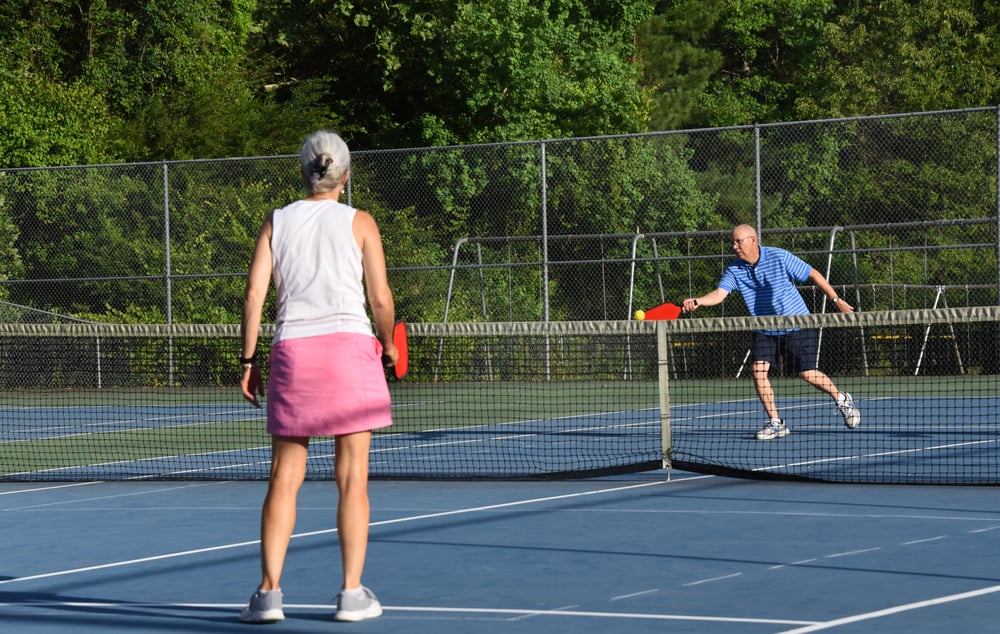
6. Add A Tree Barrier To Muffle Pickleball Sound
Many pickleball courts are converted tennis courts that may only have had a high fence around them. Of course, the quickest way to reduce sound around the entire area would be to install a sound barrier like Acoustifence, but mother nature has her own arsenal of soundproofing that you can try.
Many types of trees can absorb sound waves, and studies on highway noise have found that trees planted as a barrier row can reduce noise by half. This may be a slow method to reduce noise, but imagine how lovely a row of magnolia trees in full flower would look near the pickleball courts.
To be effective, the tree sound-barrier needs to be planted within 50 ft. of the sound’s source or the noise’s recipient. Also, remember to choose evergreen trees that won’t lose their foliage in winter!
7. Build A Solid Wall To Muffle Pickleball Sound
According to acoustic specialists, an effective method to stop pickleball noise from bugging nearby residents is to add a fence made from dense material. Solid stone or brick walls absorb the most sound; the thicker they are, the more effective they will be.
8. Correct Court Orientation Will Reduce Pickleball Sound
Believe it or not, the pop-pop sound that is annoying the neighbors will be less intense if their property is on the side of a pickleball court rather than off the ends. The sound waves bouncing off the paddles should be directed away from nearby structures.
Whenever possible, create courts that have the sides of the pickleball courts directed towards places where the noise may be a problem. If you are constructing a pickleball court in your backyard, direct one end of the court towards your own home and the other to the bottom fence, rather than laying it out towards your neighbors on either side.
9. Install Baffles In Inside Courts
Pickleball noise isn’t only a problem on outside courts, although that is where most of the complaints arise. Many gyms and community centers are adding pickleball courts inside, which is an excellent idea since it reduces the noise to the outside. However, it can become noisy for people enjoying other activities inside the same building.
Baffles or acoustic clouds work well to reduce pickleball noise in inside situations. For buildings with high ceilings, acoustic clouds can be suspended below the ceiling. When that is not possible, baffles can be suspended vertically from the roof. Both of these sound-absorbing treatments are very effective at reducing noise.
10. Stop Pickleball Noise Complaints By Involving Everyone
An article about pickleball published by The San Diego Union-Tribune suggests that tolerance for particular sounds is highly subjective. That is why you may not be too annoyed by the sound of your own baby crying on an airplane, but all the other passengers may find it unbearable.
The same principle applies to pickleball noise. While some nearby residents find it annoying, pickleball players themselves may interpret the high pop-pop as festive, and it will probably bring a smile to their faces.
Pickleball is a game that almost everyone can participate in – young or old. Involve nearby residents and get them involved. The first few hits may be a bit haphazard, but it is a really easy game to pick up, and most people get hooked pretty quickly.
It may not work in every situation, but it’s definitely worth trying. Local residents may soon be delighted to have their favorite pastime situated so close to their homes!
Conclusion
Pickleball noise can be a challenge. While it is impossible to eliminate the noise entirely, there are several ways to reduce the amount of noise produced when the paddle strikes the plastic ball. The most immediate methods involve using a softer ball and paddle, but there are also ways of creating sound barriers that can effectively reduce pickleball noise.
References
- https://www.latimes.com/california/story/2022-03-03/pickleball-noise-fueling-neighborhood-drama
- https://www.sandiegouniontribune.com/opinion/commentary/story/2022-07-01/pickleball-noise-solution
- https://homeguides.sfgate.com/trees-muffle-sound-43187.html
- https://www.acousticalsurfaces.com/blog/gymnasium/soundproofing-indoor-and-outdoor-courts/
- https://www.globalspec.com/ds/4005/areaspec/type_passive_baffle

